
CARB-COMPLIANT

Dometic builds the industry’s most rugged and reliable battery-based
engine-off air conditioning systems for trucks. Our systems are thoroughly
engineered and eld tested to provide years of trouble-free performance. We offer
a range of HVAC solutions that will give you the comfort you want at a price point
that reects your user prole.
Our integrated solutions use an inverter, AGM batteries and high-capacity
alternator to power the HVAC system. All components were chosen based on
engineering requirements, easy market availability and their ability to survive in
the harsh over-the-road truck environment.
Our sleeper HVAC solutions provide ample cooling capacity to keep you
comfortable for a minimum of 10 hours to meet the federal Hours of Service
(HOS) requirements, and can provide cooling for rest periods of up to 14 hours.
The high-capacity alternator recharges the batteries in 5.5 to 6 hours while driving
down the road.
We also offer battery-based engine-off HVAC systems for day cabs that meet the
cooling requirements for day-route and terminal-to-terminal operations.
Our green systems are the best answer to today’s environmental challenges.
There is no internal combustion engine, no exhaust fumes to pollute the
atmosphere, no oil to change, no noise, no vibration, no belts to tighten and no
worry about law enforcement violations and nes. They are 100 percent CARB
compliant, and they meet all federal, state and local clean-air laws. In addition,
you won’t need to worry about warranty issues with the truck’s manufacturer,
since our battery-based solutions do not break into the truck’s fuel or cooling
systems.
Dometic has a 50-year heritage of designing, engineering, building and
supporting HVAC systems for harsh environments. We provide extensive
applications engineering and the industry’s best service assistance when needed.
Got questions? Read through this booklet, where we explain the various
components and how they work together.
Still got questions? Call us at 804-746-1313 or email us at
sales@DometicTruck.com. We’ll be glad to talk with you.
Designed, Built, and Thoroughly Field-Tested
for the Toughest In Over-the-Road Conditions
n CARB exempt
n
EPA and SmartWay certied
nComplies with all federal, state, and local anti-idle laws
nEligible for grant and loan programs
nRuns on power from bank of AGM Group 31 batteries
nSystems tailored for sleepers and day cabs
nCools the entire sleeper – not just a bunk cooler
n
Fully integrated turnkey package – includes all components
needed for complete installation
n7,000- and 10,000-BTU capacities
•Patentedsplitsystems
•Packageunits
nHeating options:
•1-1.5kWbuilt-inelectricheat
•Diesel-redheaters
nRefrigerant will survive 2010 federally mandated restrictions
n
Extensive nationwide service and support network
How to Select, Specify, Install, Operate & Maintain Dometic Battery-Based HVAC Systems 21

An air conditioner cools a space by transferring heat from one place to another. It is based on the principle
that when a uid evaporates into a gaseous state it absorbs heat, and when it condenses from a gas back to
a uid state it releases heat.
The air conditioner uses a refrigerant – basically a chemical with a low evaporation temperature – which
ows around a closed loop, driven and pressurized by a compressor. As the refrigerant ows through the
evaporator coil it absorbs heat from the inside of the truck. The refrigerant is then pumped to the condenser,
where the heat is released into the outside air.
As a part of the cooling process, the air conditioner also removes moisture from the inside air, which makes
it feel more comfortable and keeps the interior dry and mildew-free.
A belt-driven compressor on the truck’s engine supplies air conditioning when you are driving or idling.
To keep you comfortable when the engine is shut down, it is necessary to have a separate auxiliary air
conditioning system that uses an alternative source of power.
To that end, Dometic has developed an engine-off air conditioning system that pulls 12V DC power from a
bank of batteries and inverts it to 115V AC, which drives the air conditioner. The batteries are recharged by
a high-capacity alternator, which replaces the truck’s standard alternator. When 115V AC shore power is
available, it can be connected directly to the air conditioner.
When looking at a battery-based HVAC solution, you should think of it as an engineered, integrated
system comprised of several components, which have been carefully chosen and tested to ensure reliable
performance.
•Heavy-dutybatteriescapableofnumerouscyclesofdeepdischargeandrapidrechargewithout
damaging the batteries
•High-capacity270-320ampalternatorreplacingthestandardengine-mountedalternator
•Invertercapableofoperatingupto16hourswithacontinuous100-ampDCload
•7,000-or10,000-BTU/hrairconditioningsystemwithassociatedgrills,electricalpowersupplyand
controls
On the next page we’ll take a closer look at these components and how they work together to power your air
conditioning system.
BATTERIES
Traditionally, truck batteries are designed to provide sufficient power to start the engine and operate lights,
blower motors, electrical sensing circuits and other “hotel” loads like a refrigerator or TV. It takes much
more sustained power to run an air conditioner for ten hours or more (required to meet the HOS) without
recharging. For this purpose, we require batteries that have the following characteristics:
•Theycanbedeeplydischargedwithoutdamagetothebatteries.
•Theycanberapidlyrechargedwithoutdamagetothebatteries.
•Theycandothisovermanycyclestogivetwoyearsormoreofservice.
This is why Dometic species absorbed glass mat (AGM) batteries. These batteries use a proven technology
and are readily available across North America. The batteries specied by Dometic have up to 500 cycles
in them, providing up to two years of service before replacing. The number of batteries will depend on the
capacity of the air conditioner, size of the sleeper and the use prole of the truck (see page 9).
ALTERNATOR
To provide the rapid recharging needed for the system, your standard 145- or 165-amp alternator will be
replaced by a higher-capacity alternator, typically 270 or 320 amps, depending on the number of batteries
and capacity of the HVAC system. In general, the alternator will be sized to recharge the batteries in a
specic timeframe based on the truck’s usage prole.
•Sleeper-rechargein5to6hoursforlong-haultrucks.
•Daycab-rechargein20minutesforroutedriving,60minutesforterminal-to-terminaloperations.
See page 8 for specic guidelines on sizing the alternator.
INVERTER
Off-the-shelf inverters are generally designed for relatively light intermittent loads, such as TVs, microwaves,
computers and coffee pots. Dometic’s air conditioning systems draw a minimum of 70 DC amps when the
compressor is running. They are also subject to spikes when the compressor cycles on. We have worked
closely with an experienced inverter rm to develop a unit that can handle the requirements of an air
conditioning system as well as the normal house loads. It is offered in two versions:
•Inverteronly
•Combinationinverter/charger
All of the inverters have a low-voltage cutout to protect the truck’s battery system and ensure restarting.
Dometic’s specied systems have never failed to start a truck.
SHOREPOWER
Although there are relatively few electried parking places at truck stops, rest stops and terminals, these will
become more readily available in the future. Dometic’s all-electric system is designed to run on an external
115Vpowersourcewhenavailable.Ifthecombinationinverter/chargerisinstalled,thetruck’sbatteriescan
be recharged from shorepower as well.
Air Conditioning System
Dometic offers a range of models and capacities designed to meet each truck’s load requirements, space
constraints and usage patterns. We will look at these choices on the next page.
Inverter or
inverter/charger
Batteries Group 31
AGM deep cycle
High capacity
alternator
Air conditioner
115 VAC
12 VDC
12 VDC
12 VDC
How to Select, Specify, Install, Operate & Maintain Dometic Battery-Based HVAC Systems 43

Split Systems
Model
Cool
Capacity
(BTU/hr)
Heat
Capacity Control Height Width Length Weight Cool
Amps
Heat
Amps Refrigerant
Internal Unit – Evaporator/Heater/Compressor
ECFQ7 7,000 Cooling Only Smart
Digital 11.75" 10.25" 19.25" 53 lb. 7.3 N/A R-417A
EHCFQ7 7,000 1 kW Smart
Digital 11.75" 10.25" 19.25" 53 lb. 7.3 8.2 R-417A
ECFQ10 10,000 Cooling Only Smart
Digital 11.63" 11.12" 20.19" 60 lb. 11.8 N/A R-417A
EHCFQ10 10,000 7,500BTU/hr
Espar Ready
Smart
Digital 11.63" 11.12" 20.19" 60 lb. 11.8 1.0 R-417A
EHCFQ10 10,000 1.5 kW Smart
Digital 11.63" 11.12" 20.19" 60 lb. 11.8 13 R-417A
EHCFQ10 10,000 2 kW Smart
Digital 11.63" 11.12" 20.19" 60 lb. 11.8 17 R-417A
External Unit – Condenser
ACCD7 7,000 N/A N/A 6.125" 11.31" 21.875" 10 lb. N/A N/A R-417A
ACCE10 10,000 N/A N/A 6.125" 12.50" 24.50" 12 lb. N/A N/A R-417A
Self-Contained Systems
Model
Cool
Capacity
(BTU/hr)
Heat
Capacity Control Height Width Length Weight Cool
Amps
Heat
Amps Refrigerant
ASCF7 7,000 Cooling Only Mechanical 12.5" 15.25" 21.50" 62 lb. 8.5 N/A R-22
ASCEQ7 7,000 Cooling Only Smart
Digital 11.94" 17.75" 24.00" 70 lb. 8.9 N/A R-417A
ASCEQ7 7,000 7,500BTU/hr
Espar Ready
Smart
Digital 11.94" 17.75" 24.00" 70 lb. 8.9 1.8 R-417A
ASCEQ7 7,000 1 kW Smart
Digital 11.94" 17.75" 24.00" 71 lb. 8.9 9.5 R-417A
ASCEQ7 7,000 1.5 kW Smart
Digital 11.94" 17.75" 24.00" 71 lb. 8.9 13.4 R-417A
ASCDQ10 10,000 Cooling Only Smart
Digital 12.5" 20.87" 28.25" 91 lb. 12.9 N/A R-22
ASCDQ10 10,000 1.5 kW Smart
Digital 12.5" 20.87" 28.25" 91 lb. 12.9 13.9 R-22
ASCDQ10 10,000 2 kW Smart
Digital 12.5" 20.87" 28.25" 91 lb. 12.9 18.2 R-22
Dometic offers two basic types of air conditioning systems:
•Patentedsplitsystems
•Self-containedpackageunits
In the majority of cases, split systems are preferred, but there may be occasions when a package unit is
desirable.
Dometic’spatentedsplitsystemsconsistoftwoseparatemodules.Theoutsidecondenser/fan(CF)unitis
boltedhorizontallyunderthetruckorverticallytothebackofthecaborsleeper.Thecompressor/heater/
evaporator/blower(CHEB)unitismountedinsidethetruck,usuallyunderabunkorseat,orinasidestorage
locker. The two units are connected by reusable precharged refrigerant linesets with quick-connect ttings at
both ends. The system is designed so that both units automatically charge to the correct refrigerant pressure
as soon as the linesets are connected. No special tools are required.
The self-contained unit is designed to be wholly mounted inside the truck. All of the air conditioning
components, including the compressor, condenser, evaporator, blower, power supply and optional heater are
mounted on a single chassis with an aluminum cover. The closed refrigerant loop is precharged and sealed
at the factory. Air is discharged from the condenser to the outside air through cutouts in the oor.
Both types of systems can be ordered with built-in electric heat modules, or can be used with a diesel-red
heater under control of the same thermostat.
TheDometicHVACsystemsuseastandarddigitalthermostat/displayunit.Operationisintuitiveandeasy,
with up and down arrows to adjust the setpoint and fan speed. The installation kit will also include ducts,
grills, condensate drains and electrical wiring.
Each approach offers advantages and disadvantages. A self-contained unit is simpler to install and maintain,
since it does not have any external refrigerant lines. It is also less expensive than a split system of the same
BTUcapacity.Ontheotherhand,ittakesmoreinteriorspace,anditrequirescuttingholesintheoorboard
for air to ow to and from the condenser.
A split system, on the other hand, has more installation exibility and uses less interior space. It also is
quieter, since the condenser is located outside the truck.
Both types of air conditioning systems can include built-in electrical heat modules. The heat is blown through
the same ducts and grills and controlled by the same thermostat. They can also be used in conjunction with
a diesel-red heater if desired, under control of the same thermostat.
Whichever type of system you select, it will come with ducts, grills, condensate drains, thermostat controls
and electrical wiring.
Self-contained unit beneath bunk Split system beneath bunk Split system with outside
condensing unit
How to Select, Specify, Install, Operate & Maintain Dometic Battery-Based HVAC Systems 65

Although in some cases it may be desirable to install a separator to isolate
engine starting batteries from the others, we recommend adding the extra
batteries and tying them with the existing bank, creating in effect a single bank of
batteries. The protective low-voltage cutout circuit on the inverter will shut down
electrical loads whenever the batteries reach a pre-set voltage level, ensuring
that sufficient power is retained for cranking the engine.
It is important to understand the effect of adding more batteries on the system.
The relationship is not linear. For instance, if two batteries give you 1.5 hours, it
does not follow that three batteries would give you an additional .75 hours. The
result would be a total of approximately 3 hours. This is why, given battery low-
voltage safeguards, we recommend a single bank of batteries without separators.
Dometic offers several sizes and shapes of frame-mounted boxes containing the extra batteries and inverter,
with all electrical hookups prewired, providing a substantial savings in installation time.
ALTERNATOR
Most trucks are equipped with a 145- or 165-amp
alternator. This is adequate to serve the general needs of
the truck. But when you add the increased requirement of
recharging the bank of batteries, you will need a higher-
capacity alternator capable of putting back in some 700- to
900-amp hours in a reasonable time frame. The standard
alternator is not built for this continuous load. The chart to
the right provides guidelines for sizing the alternator.
INVERTER
The inverter specied by Dometic is a 2,000-Watt unit with a modied sine-wave (MSW) output. (See page
4 for an explanation of the inverter’s function.) The inverter has the same dimensions as a Group 31 battery,
and ts into a standard battery slot.
Theoptionalcombinationinverter/chargerunitcontainsa115Vpass-throughcircuitandbuilt-in50-amp
charger, permitting you to run the air conditioner and recharge the batteries from shorepower.
We worked with an experienced inverter technology company to develop this unit to meet the unique
demands required for an HVAC system. For instance, when the air conditioning compressor cycles on, there
is a momentary heavy load that the inverter must accept and hold until the compressor gets past its starting
requirement. It’s only a few milliseconds, but it’s very important.
SHOREPOWER
TMC recommends a minimum of one 20-amp circuit for
shorepower connections. You should use a heavy-duty
power cord with a minimum of a 10-gauge wire and a
three-prong plug. Remember that there will be a voltage
drop across the cord, so you should use the minimum
length necessary to reach your outside power source.
In the following paragraphs, we will offer some basic guidelines for specifying the system components. For a
more detailed discussion of specic packages for sleepers and day cabs, see page 9.
Air Conditioning Units
Your rst step will be determining the type of air conditioning unit (split or self-contained), then sizing the unit
to meet the expected heat load.
Generally, the preferred solution is a split system, since it takes up less space inside the truck and is also
quieter, since the condenser is located outside the truck. The quick-connect refrigerant lines are easy to
connect without any special tools. It also avoids the need for large cutouts in the oor for air to ow to and
from the condenser.
System capacity depends on a number of factors, such as the size and shape of the space to be cooled,
the amount of insulation (see page 10), the size and location of windows, the color of the truck and the
ambient temperature outside. It also depends on how long you will run the system on battery power between
recharges. (See specic guidelines for sleepers and day cabs on page 9.) If you are specifying a system with
heating as well as cooling, use the following table for sizing the electric heat modules.
NotethatDometic’sairconditionersareratedinBTUs
perhour(BTU/hr).Thatistosay,everyhour,the
systemwillremoveacertainnumberofBTUsofheat
from the inside of the truck. Some other manufacturers
maycitecapacitiesinBTUs–notBTU/hr.Itmakesa
big difference, and you should ask about this.
Batteries
To power your Dometic HVAC system, you will replace your truck’s standard lead-acid batteries with Group
31AGMbatteries,whicharedesignedtosupporttheheavierloadsandmorefrequentdischarge/recharge
cycles. (See page 4 for an explanation of AGM batteries.) Additional AGM batteries will be installed as
needed to meet the capacity and usage requirements. The table below offers general guidelines for the
number of batteries required.
Hours Running on House Batteries
(AGM Group 31 Batteries)
No. of Batteries 7,000BTU/hr 10,000BTU/hr
100% Run 60% Run* 100% Run 60% Run*
2 1.9 3.8 N/A N/A
3 3.4 6.1 N/A N/A
4 4.9 8.5 N/A N/A
5 6.1 10.6 N/A N/A
6 7.3 12.8 5.0 8.7
7 8.9 14.9 5.8 10.2
8 10.2 17.1 6.7 11.6
*Air conditioner runs 60% of the time, cycling off and on as needed to maintain the desired temperature.
Heating Capacity Application
1.0 KW 48 in. sleeper
1.5 KW 60 in. sleeper
2.0 KW 72 in. sleeper
29.7"
(753.2mm)
33.0" (838.2mm)
33.0"
(838.2mm)
17.6"
(446.2mm)
2.2"
(57mm)
20.4"
(517.9mm)
27.4" (695.2mm)
15.1"
(384.2mm)
17.7"
(449.4mm)
2.2"
(57mm)
20.4"
(517.9mm)
30.9" (785.2mm)
15.1"
(384.2mm)
23.2"
(590.4mm)
2.2"
(57mm)
25.9"
(658.9mm)
20.6" (522.2mm)
26.3"
(667.2mm)
No.ofBatteries Alternator Size
4 or less 270 Amps
5 or more 320 Amps
12 Gauge Cord Upto25'
10 Gauge Cord Upto50'
How to Select, Specify, Install, Operate & Maintain Dometic Battery-Based HVAC Systems 87

SYSTEMS FOR SLEEPERS
The following guidelines are based on TMC recommendations for “average” conditions. You may need to
consider extra air conditioning capacity if you are operating in very hot climates.
Here is a typical package for two sleeper proles. They are based on the assumption that the operator will
need a minimum of ten hours rest in which the entire sleeper is cool.
60–72" High Rise
Batteries 8 AGM Group 31
Replace existing 4 lead-acid batteries, and add 4 more
AGM batteries (Check on Dometic’s selection of prewired
battery boxes to save time and money on installation)
Alternator 320 amp, high output Replace existing alternator on truck engine
Inverter 2,000-Watt MSW Consideroptionalinverter/chargercombinationfor
charging batteries from shorepower
HVAC System 10,000BTU/hr Split system or self-contained unit
48" Sleeper or 60" Low Roof
Batteries 6–7 AGM Group 31
Replace existing 4 lead-acid batteries, and add 2-3 more
AGM batteries (Check on Dometic’s selection of pre-wired
battery boxes to save time and money on installation)
Alternator 320 amp, high output Replace existing alternator on truck engine
Inverter 2,000-Watt MSW Consideroptionalinverter/chargercombinationfor
charging batteries from shorepower
HVAC System 7,000BTU/hr Split system or self-contained unit
SYSTEMS FOR DAY CABS
Dometic also offers engine-off HVAC solutions designed specically for the requirements of day cabs. The
easy-to-install system can serve two different user proles:
•Dayroute–Coolsthecabduringatypical15-30minutewait,rechargesin20-30minutes.
•Terminal–Coolsthecabforuptotwohours,rechargesinonehourofruntimebacktoabreakpoint.
Day Cab System
Batteries 2–3 AGM Group 31 Replace existing lead-acid batteries with AGM batteries
Alternator 270 amp, high output Replace existing alternator on truck engine
Inverter 2,000-Watt MSW Consideroptionalinverter/chargercombinationfor
charging batteries from shorepower
HVAC System 7,000BTU/hr Split system with external condenser unit – inside unit has
custom composite cover with controls and vents
INSULATION
Most truck cabs and sleepers are insulated with a value of approximately R 1 to R 1.25. Even the cold-
weather packages offered with some new trucks have an insulation value of R 2. By comparison, most new
homes are insulated to R 30. TMC-recommended practices call for R 4.2 as a standard insulation package
and greater than R 4.6 in a premium package. This standard, once adopted by the industry, will go a long
way toward improving the performance of your engine-off HVAC system.
If you are ordering a new truck, we strongly recommend requesting the additional insulation package. There
are also measures you can take to reduce the heat load in your truck: cover skylights, insulate the oors with
foam under the carpet, add insulation to the doors, get heavy-duty blackout curtains to separate the sleeper
from the cab, cover the windshield and windows with reective shades when stopped, park in the shade
whenever possible, switch off heat-producing appliances in the sleeper.
REPLACING BATTERIES
The AGM-type batteries should provide approximately two years of service under normal operating
conditions.
MAINTENANCE
Inspect the batteries frequently. Check for solid electrical connections. Make sure the cable connections are
good with no corrosion showing. Check for chang and moisture.
Inspect and clean the air lter regularly to ensure good airow across the evaporator coils. You will nd the
lter in the return air path, either directly behind the grill or in front of the evaporator coil on the unit.
Do not block the airow path between the grill and evaporator coil with pillows, blankets, papers or other
objects.
Check the condensate drain often to make sure water is draining properly. If drain plugs are clogged, clear
them.
Periodicallycheckforchafeonoutsidewiresandrefrigerantlines.
Inspect and clean debris from the condenser unit mounted outside of the truck.
Note that Dometic HVAC systems are designed so you should never need to recharge the refrigerant loop
under normal operating conditions. If the refrigerant level needs to be adjusted, federal law requires that
itmustbedonebyanEPA-licensedHVACtechnicianwithpropertoolstoavoidaccidentaldischargeof
refrigerant gas into the air.
How to Select, Specify, Install, Operate & Maintain Dometic Battery-Based HVAC Systems 109

ISO 9001:2008
L–2523 Rev. 20090807
Dometic Corporation, Environmental Division
P.O.Box15299
Richmond, VA 23227
Phone:804-746-1313Fax:804-746-7248
Email: sales@DometicTruck.com
Website: www.DometicTruck.com
Patents:7,171,822•7,234,315B2•7,140,192•7,316,119•7,237,397B2
-
 1
1
-
 2
2
-
 3
3
-
 4
4
-
 5
5
-
 6
6
-
 7
7
Dometic ECFQ10 Owner's manual
- Type
- Owner's manual
- This manual is also suitable for
Ask a question and I''ll find the answer in the document
Finding information in a document is now easier with AI
Related papers
-
Dometic Air Conditioner Battery-Powered Auxiliary Air Conditioning System User manual
-
Dometic 14 User manual
-
Dometic Battery--Powered Auxiliary Air System User manual
-
Dometic Truck HVAC Systems Operating instructions
-
Dometic 7 User manual
-
Dometic Duo Therm Cab Comfort Heat Pump For Semi-Sleeper 42044.502_42055.502 Installation guide
-
Dometic Battery-powered HVAC For Day Cabs User manual
-
Dometic Air Conditioner ACCE10 User manual
-
Dometic 750000005 (TJ18F) User manual
-
Dometic 2597 User manual
Other documents
-
Thermo King TriPac EVOLUTION User manual
-
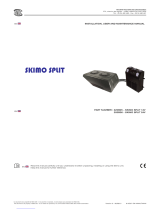 Skimo Split 320B06 Installation, User And Maintenance Manual
Skimo Split 320B06 Installation, User And Maintenance Manual
-
Thermo King TriPac User manual
-
Webasto BCT010300C User manual
-
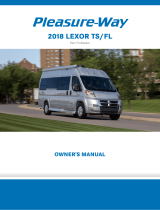 Pleasure-Way LEXOR FL 2018 Owner's manual
Pleasure-Way LEXOR FL 2018 Owner's manual
-
Thermo King TriPac Envidia Installation guide
-
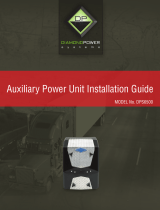 Diamond Power Products DPS6500 User manual
Diamond Power Products DPS6500 User manual
-
Thermo King TriPac® Envidia™ 2 APU Installation guide
-
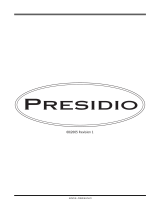 Mandalay 2006 Presidio User manual
Mandalay 2006 Presidio User manual
-
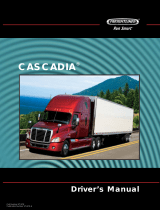 freightliner Cascadia Driver Manual
freightliner Cascadia Driver Manual











